Do you love Japanese Food? Or perhaps you are finding it difficult to understand what everyone is raving about. This Tokyo foodie tour will not only help you find the hidden gems but also introduce the local foodie culture and etiquette as you wander from Ginza to Shimbashi.
We’ve made many trips to Japan over the last decade and when we’re asked what it is that attracts us back so readily, the food is always very high up on our list. That said, there is always more to learn and experience with a food culture as diverse as Japan’s.
On a recent trip, we made it a priority to try out not just a whole list of new restaurants but a few food experiences in each of the cities we visited. They say there are over 130,000 restaurants in Tokyo alone so taking a little direction from the locals in picking the best places to eat during your stay just makes sense.
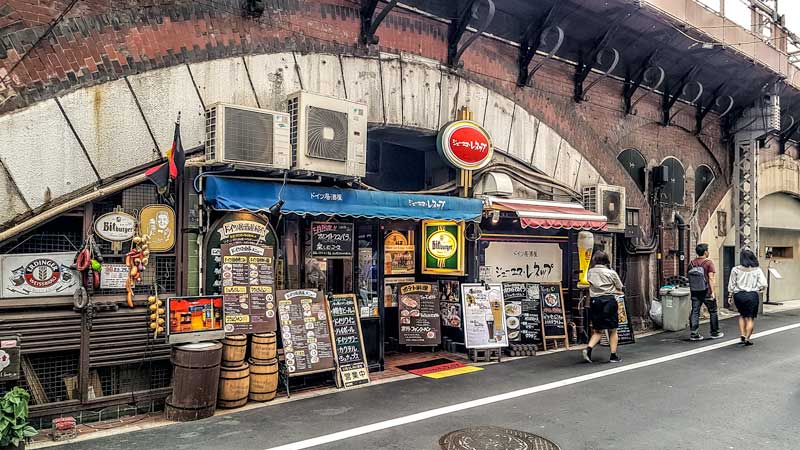
We included a couple of quite different Tokyo food tours on this trip and you can read more about our food tour experiences in Asakusa and Ueno in the linked articles. On this one, we head into the heart of Tokyo. We start in Ginza, just a stone’s throw from the Imperial Palace and Tokyo station to join Arigato Japan’s Allstars food tour.
The Allstar Tokyo foodie tour
This tour took us on a walking tour through the economically and culinary diverse areas of Yurakucho, Ginza and Shimbashi but despite their different vibes and price points, we found fantastic Japanese cuisine and fun experiences at each stop along the way.
Arigato Travel is a food tour business that puts its full focus on Japan and employs local guides to take you inside the food culture of each of the regions where it operates. In Japan, every prefecture, even every region within a prefecture has its food specialties known as meibutsu. They can be something grown there or a dish from the region such as rich creamy Hokkaido ice cream, apples from Aomori, Okonomiyaki in Osaka or yuba from the clean mountain water of Nikko. It’s always something that the region does exceptionally well and is justifiably proud of its quality.
Not only will you learn about the produce and dishes but guides will share information about food customs, table etiquette and background information on the places you visit and areas you pass through along the way. The tours are run as a small group and on foot so the setting is casual and social. It felt more like I was out for a walk with a friend than being let around and inundated with facts and figures.
The Allstars evening tour – an experience for foodies
We’d spent the day in Odaiba before joining the Arigato Travel evening Allstars tour that covers Yurakutcho, Ginza and Shimbashi. The meeting time is just before 4 pm near Ginza station which is an easy station to navigate to on the Metro depending on where you are coming from. You’ll get very specific instructions on where to meet which are easy to follow.
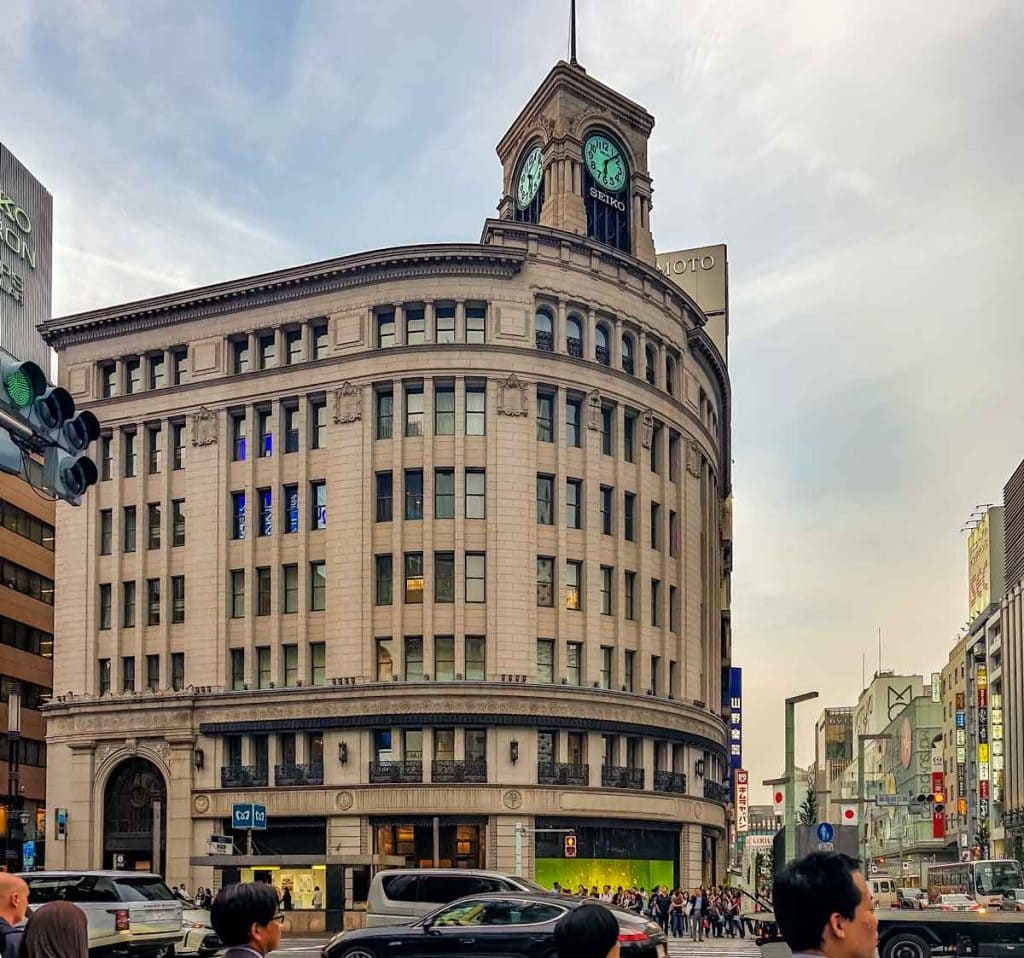
Ryan was our guide on this tour, his enthusiasm for the area was infectious. Once introductions were done our group of 6 headed off under the nearby train tracks in search of our first destination. Beneath the tracks isn’t where you’d head for good food in many cities but this part of Tokyo has a history.
After the war, a lot of the city infrastructure was destroyed and one of the first priorities in order to get the city functioning again was to rebuild the transport networks.
This space is known as gado-shita (beneath the tracks) and extends several hundred metres on either side of the station. The space is packed with a diverse range of places to eat and drink. It’s really popular with the local businessmen on their way home from work and today you’ll find all kinds of restaurants including European and other Asian cuisines located here.
With Ryan’s guidance, we head to a more traditional izakaya. It’s still holding fast to its 1950s cafeteria styling complete with movie posters from the era plastered outside and a cozy fit-out within. Your typical drink in an izakaya is draught beer although sake and other drinks such as umeshu, a plum wine served with soda water are other options.
In Japan’s ever-polite society, I was surprised to learn that in an Izakaya it’s quite normal just to hold up your glass and call “nama”, Japanese for draught beer, to get a refill. Our snacks here are diced sashimi of maguro (bluefin) tuna and Hamukatsu, ham that is breaded and deep-fried. The Hamukatsu became popular after the war and while it fits with the theme of this izakaya it was not really my thing, you can’t go wrong with raw tuna though.
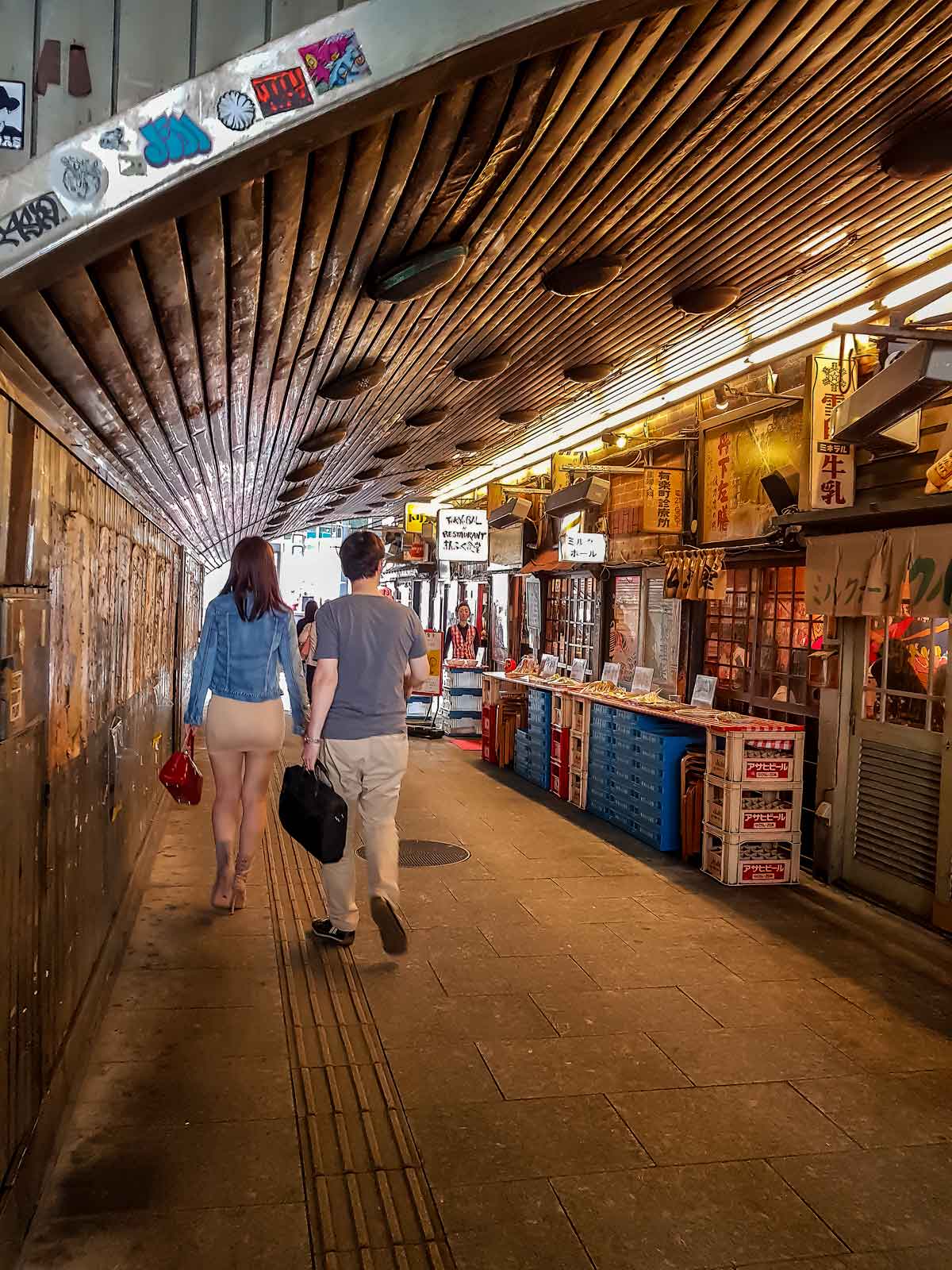
Our guide Ryan stops to pose with the smiling face of Kiyoshi Kimura the self-styled tuna king. Sushi Zanmai is a chain restaurant that sells good quality sushi at reasonable prices and you can find them all around the city including in the Tsukiji fish market. Another quirk of Japan is that, unlike many cities around the world where you’d ALWAYS bypass the restaurant chains they can be a great option here for quality, price and often a little easier if you speak limited Japanese.
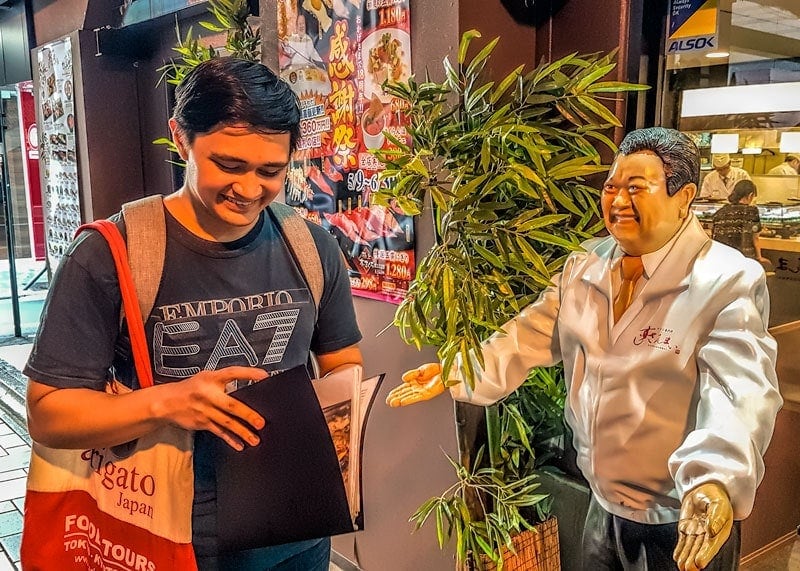
This particular restaurant is really well known by locals too as the owner is a marketer at heart and firmly claimed his tuna king title when he paid millions for the first tuna sold at the Tokyo fish market when it moved to Toyosu from Tsukiji. He went on to serve the most expensive tuna ever sold to customers in his budget-friendly restaurants.
We kept walking and before long the pavement turns to cobbled streets and we’re in the heart of Ginza, the most expensive land in Japan. Turning down another alley we’ve arrived at a very different izakaya, this one gleaming and modern. The specialty here is food and drink from Ise Prefecture.
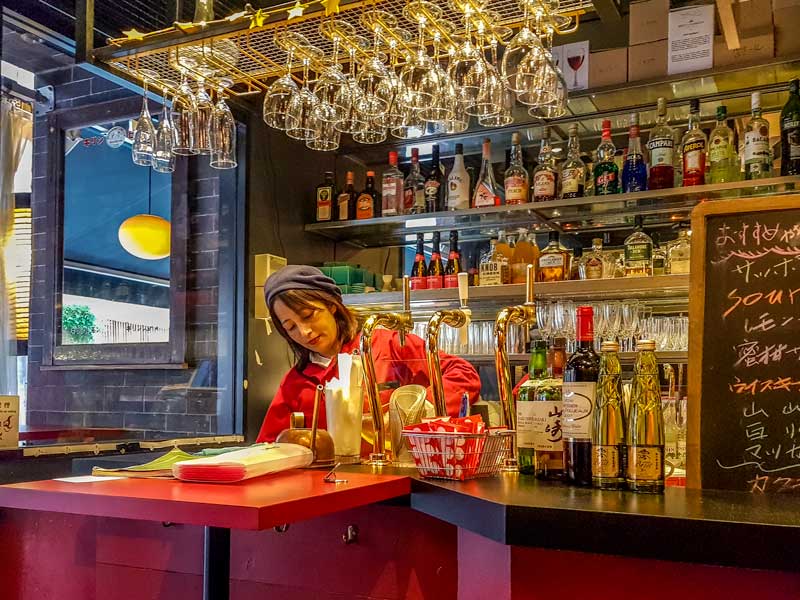
I started with a shochu made from mandarins and sugar cane grown in the prefecture of Okinawa and topped off with soda water. Delicious and refreshing. The food here is fabulous and it immediately went onto my list for next time we are in Tokyo.
Our first plate was yakitori but we deviated away from the traditional poultry. The wagyu served here is from Matsuzaka, the second top beef-producing region in Japan and each animal is certified in the same way as Kobe beef.
Our wagyu skewers are served with wasabi, tuna with sakura salt and chicken with yuzu salt. Each has a very distinct flavour and perfect pairing but I’m having trouble picking out one favourite. They are all very good.
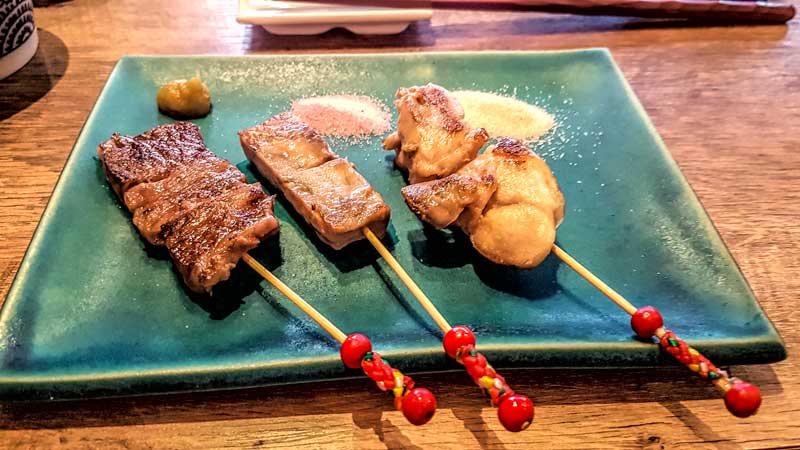
The second dish is somewhat intriguing, it’s a zero-calorie noodle made from seaweed but we receive long rectangles of what appears to be a semi-transparent white jelly that we push through a sieve-like device with a plunger forming the noodles into our cup. Alone they don’t have a distinctive flavour but with a little seasoning, they are delicious.
The final dish is a very chubby udon noodle, not like any I’ve seen before. It’s glazed in a tasty sauce and with a touch of the Japanese condiment, shichimi, it’s also delicious but I am wary of eating too much this early in the evening. It’s very filling and while udon might not be as famous as Tokyo ramen, I might be seeking out a lot more udon if it is as well made as this.
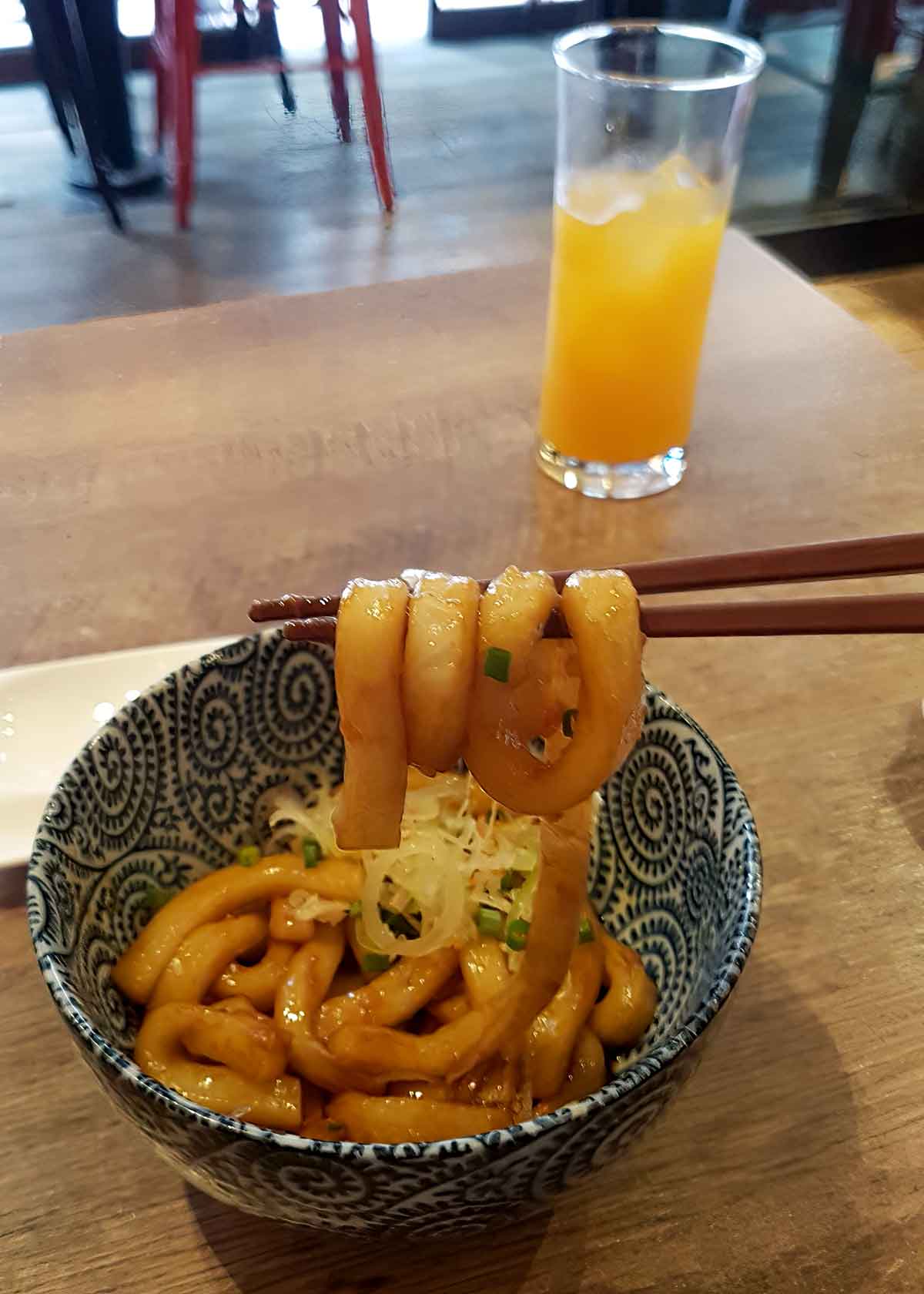
Too soon it’s time to move on and we make a couple more stops around the cobbled Ginza streets including a senbei shop that specialises in a sweet decorative form. We learn about depachika, the basement of department stores reserved for food and a must-visit for any foodies itinerary. Ryan pointed out a couple of excellent ones for us in this area that we revisited later in the trip.
Soon the cityscape changes again and we are in Shimbashi, an area known for its ‘salaryman’ restaurants, and small affordable eateries that serve up diverse and delicious fare. We are staying in Shiodome on this trip and were amazed at how quickly and easily we walked from Ginza to here with so many interesting stops in between, when you know the laneways and shortcuts it is quite a compact part of the city.
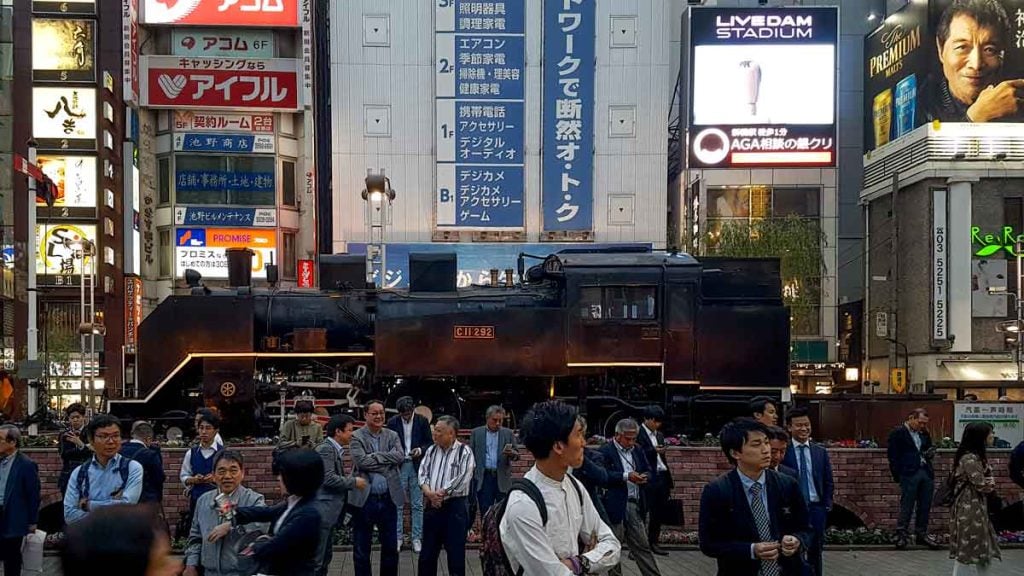
I thought we knew this area pretty well with one of our favourite Tokyo hotels adjacent to the station area but as we leave Steam Locomotive Square I don’t recognise the path we follow or our destination restaurant. Settled into a table at the back of the restaurant Ryan orders a range of dishes, so many we have no hope of finishing them in the available time.
There is raw fish, beef, noodles and an interesting pot heated on the table and enriched with bone marrow. The meat-wrapped onigiri are a standout for me as is their house-made miso dip. We’re told the place is best known for the chicken it sources from its own organic chicken farm on the southern island of Kyushu.
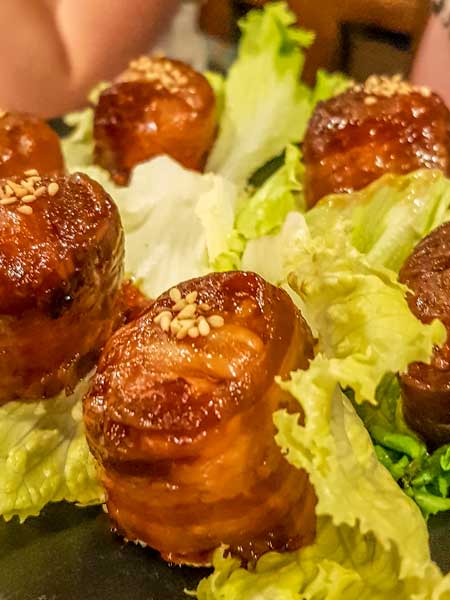
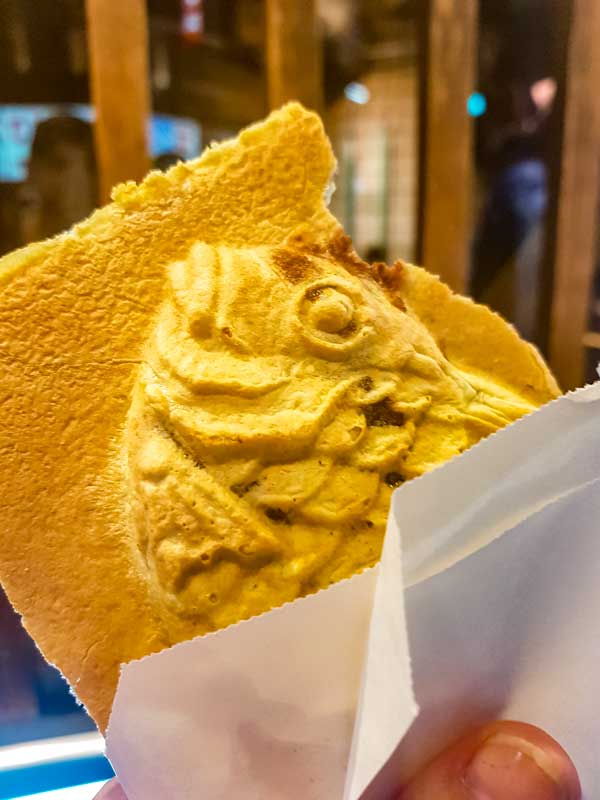
Our final stop as we take a last guided stroll passing small shrines hidden in laneways on the way back to the station is a Taiyaki store. This one is clearly a local favourite with a sizeable queue that moves quickly, everyone seems to have their standard order, and there’s no dithering around making your mind up when you reach the window. The fish-shaped fritters are filled with red bean or custard and are one of my favourite after-dinner treats. They aren’t too sweet or too filling but are a delicious way to end the evening.
We thoroughly enjoyed our All-Stars night food tour. There was plenty of food spread across the 3-hour tour and it was both good quality and interesting in its variety. Although we are quite familiar with Tokyo at this stage and had walked through and eaten in the Ginza and Shimbashi areas many times over the years we hadn’t been to any of the places included on the tour before.
While I’d generally recommend a food tour early in your visit to a city so you can make use of all the tips and get back to some of the recommended spots this one was an equally good value for us as frequent visitors and will definitely be looking to add a Tokyo food tour or two with Arigato Travel tours to our next visit, they have a great range both for day time and the evening. A couple we already have our eye on are the Kawaii food tour in Harajuku and the Shibuya night food walking tour.
Marie Josée Roy
Monday 9th of January 2023
Hello, I was searching for a foodtour in Tokyo for my family but Arigato cie are very expansive, is worth it? Thank you
Toni Broome
Thursday 12th of January 2023
Hi Marie. We rarely do organised tours, usually preferring to explore slowly on our own, however, food tours are something we are happy to splurge on especially in Japan. It really does come down to personal interest and budget in deciding whether it is worth it. It is a bigger ticket item and I would suggest you read the tour operator's information carefully and read reviews rather than rely on ratings when deciding so you can focus on the aspects that matter to you. In this article and other food tour articles on our site, I go into quite a bit of detail about the tour to help you decide if it would be a good addition to your itinerary or not. I am selective about the food tours we do and we do really enjoy the Arigato ones so will do more on future trips, our experience has been that they include quality stops, the groups are a good size so it is easy to converse with the guide and across the whole group and we learn something each time. One reason we enjoy food tours in Japan generally is that the guides are very generous with their general knowledge of the city so we discover new spots to try on other days, we always come away with more bar and restaurant recommendations than we can fit into the remaining trip.
Neda
Sunday 6th of November 2022
The arigato tours sound great. I am thinking of booking with them. Is there a discount code to use on your website when I book? Like if I mention your name do I get a discount with them?
Toni Broome
Tuesday 8th of November 2022
Sorry Neda, I'm not aware of any discount codes for these tours